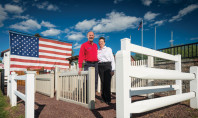Pocono Raceway
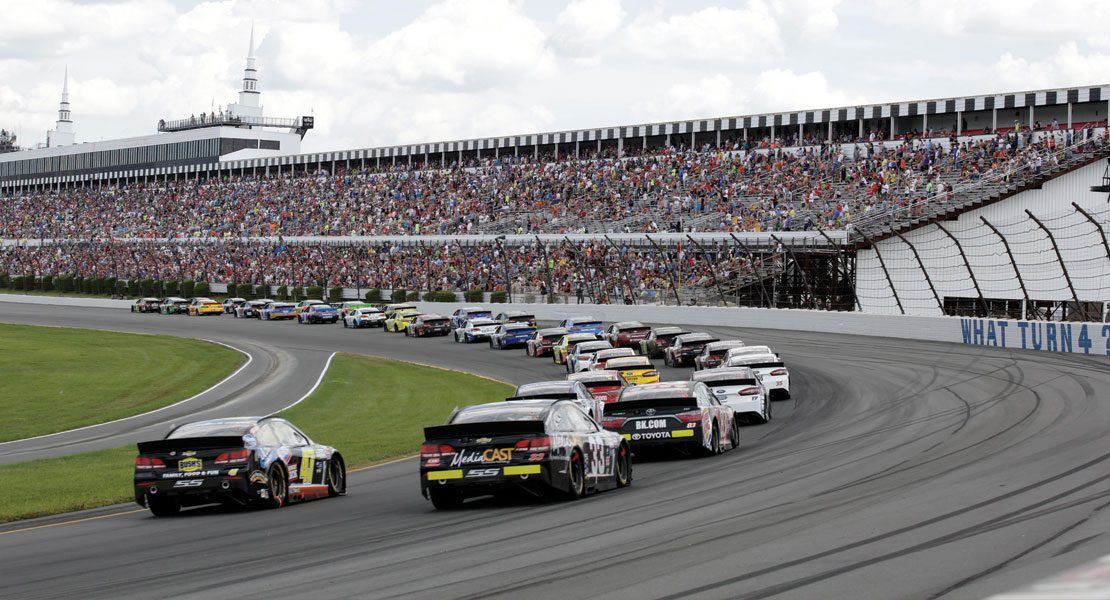
Known to NASCAR fans as the “Tricky Triangle” thanks to its three signature turns, the Pocono Raceway in Monroe County has been thrilling car racing enthusiasts for nearly five decades.
Established in 1957 by Dr. Joseph Mattioli and his wife, Dr. Rose Mattioli, the raceway is one of only a handful of NASCAR tracks that is still privately owned and operated. “My grandfather was a dentist from Philadelphia who wanted to dabble in real estate,” explained Brandon Igdalsky, Pocono Raceway’s current President and CEO. “He had already built a ski resort and a housing complex. So when some other folks in the area were looking to build a racetrack, one thing led to another.”
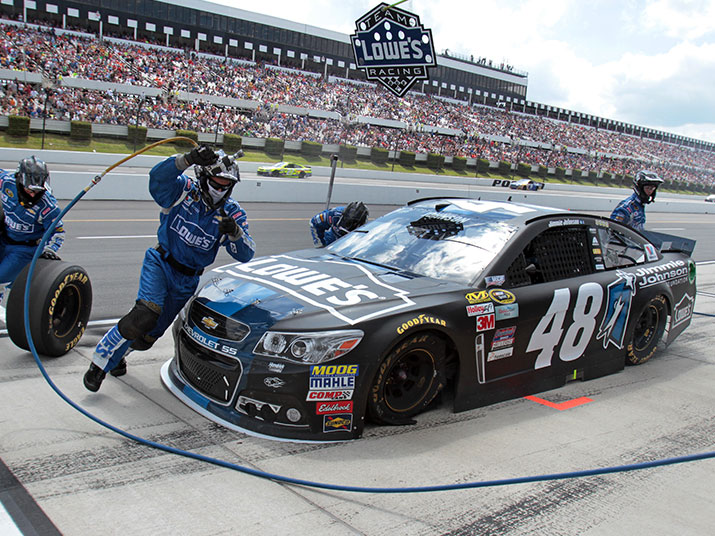

Along with a small group of investors, the Mattiolis purchased approximately 1,025 acres of forest and spinach fields in Long Pond, PA. In 1965, construction began on a drag strip and a ¾ mile long track. By 1968, the ¾ mile long track was complete and the Pocono Raceway hosted its first race – a modified series, similar to the ones that used to run at the old Nazareth Speedway.
While the ¾ mile track hosted races each season, construction continued on a 2.5 mile long raceway. To design this longer track, the Mattiolis employed the services of Roger Ward, a former American racecar driver who had won the Indianapolis 500 in 1959 and 1962.
Ward modeled the track’s three signature turns after three of his favorite speedways: Turn One, which banks at 14 degrees, was designed to be like the old Trenton Speedway in New Jersey. Turn Two, with its 9 degree banking, was modeled after the Indianapolis Motor Speedway, which hosts the annual Indy 500. And Turn Three, which banks at just 6 degrees, was created to be like The Milwaukee Mile, famous for being the oldest operating motor speedway in the world. The original drag strip was also incorporated into the track, becoming the front straight away.
“Sustainability is very important to me,” explained Brandon Igdalsky, CEO, Pocono Raceway. “It’s a lot of work to get there, but we feel we can do it and be a leader in the motor sports world…”
“Ward was really the mastermind behind the track,” said Igdalsky. “He wanted to keep it interesting, and he created a track that is really unique in the world of racing. There is no other track like it here in America.”
In 1971, the Pocono Raceway hosted its first race on the 2.5 mile track. An Indy Car series called the Schaefer 500, the race was won by Mark Donohue, who would go on to win the Indianapolis 500 the following year.
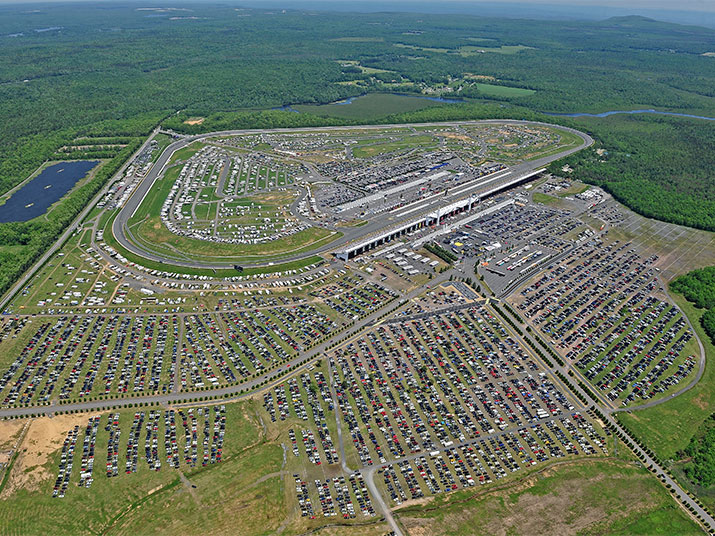
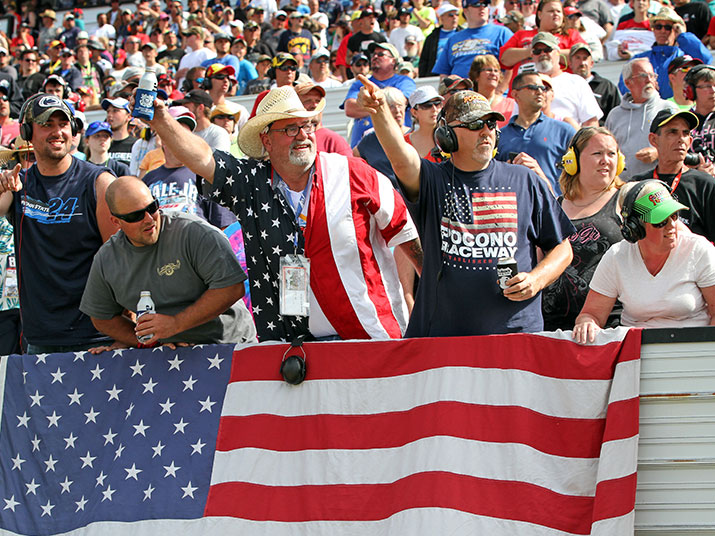
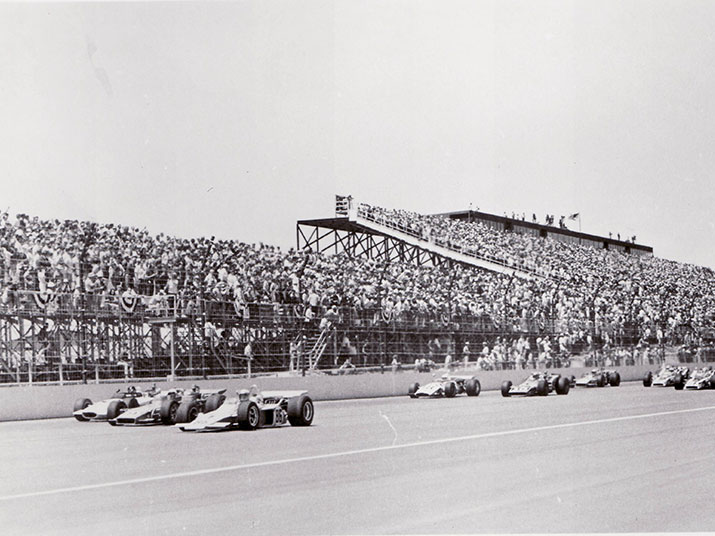
But while the opening of the 2.5 mile track seemed like a harbinger of bigger and better and things to come, the Pocono Raceway was almost immediately hit with a string of difficulties. In 1972, Pennsylvania, along with much of the eastern United States, suffered devastating destruction during Hurricane Agnes. Causing an estimated $3 billion dollars in damage, Agnes was, at the time, the costliest hurricane to hit the United States. Although the raceway managed to escape significant damage thanks to its limited infrastructure, the surrounding area was so heavily destroyed that it forced the cancellation of several major races in the 1972 season. This natural disaster was followed almost immediately by the 1973 gas crisis, which drove oil prices to record highs, and an overall downturn in the U.S. economy.
“That was a really rough time because attendance for Indy Car was also falling, and NASCAR didn’t have its big boom yet,” explained Igdalsky. “My grandfather got into a lot of arguments with the bank, and would sometimes have to ask the staff to forego paychecks for weeks or months on end to keep it going.”
But just as the Mattiolis considered cutting their losses and selling the Pocono Raceway, they received a phone call from none other than Bill France, Sr. – the founder of NASCAR. Inviting the couple to meet with him in New York, France encouraged the Mattiolis to keep the raceway, and gave them advice on how to help turn things around. With France’s guidance and moral support, the Mattiolis threw themselves back into the business with a renewed vigor. To show his support for their efforts, France and his wife also attended the Pocono Raceway’s events for the next two years.
In the early 1980s, the Mattiolis’ efforts began to pay off when NASCAR awarded them their second yearly race. “That second race really helped,” said Igdalsky. “And then in the mid to late 80s, as NASCAR started to take off, we finally started to make some money.”
With the newfound income, the Mattiolis were finally able to start putting money back into the raceway. In 1990, they embarked on a series of upgrades and renovations that would cost a total of $30 million dollars over the next ten years. These upgrades included new crash walls, new pavement and the creation of a large paddock area designed so fans can get close to the cars and drivers. The garage area was also updated and expanded, which forced the closure of the old ¾ mile track.
In 2007, Joseph Mattioli named his grandson, Brandon, president of the operation. Four years later, in August 2011, Mattioli announced his retirement at the same time he promoted Brandon to CEO and his brother, Nick, to COO. Today, the Igdalsky siblings are the third generation to manage the raceway.
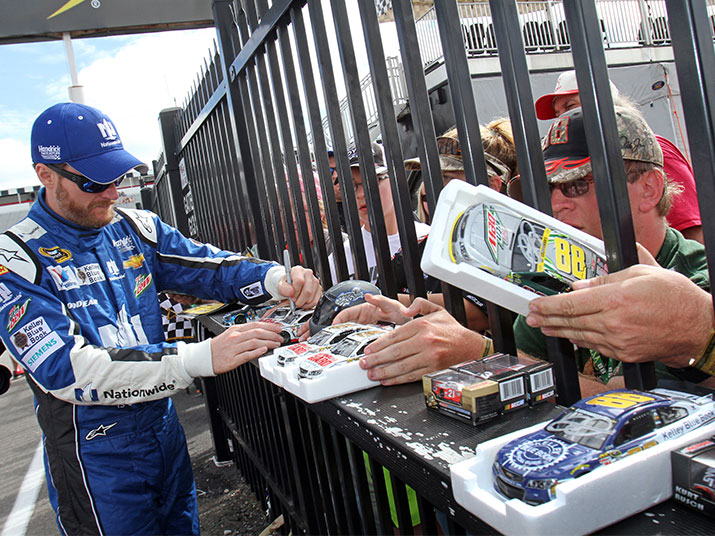


Like their grandparents, the Igdalsky brothers continue to make improvements to the facilities. In 2008, they became the first raceway to transition to 100% scanned tickets. Two years later, they opened the Pocono Raceway Solar Farm – becoming the United States’ first privately owned sports facility to be completely powered by solar energy. In addition to powering the Pocono Raceway facility, the 25-acre solar farm also places enough energy back on the grid to power more than 150 local homes and businesses.
Most recently, the Igdalskys have announced plans to reach 75% waste diversion by 2018. They are currently working with Penn State University to create a long-term strategy to meet this goal, and hope to bring on one of the university’s graduate students as Director of Sustainability in the near future. “Sustainability is very important to me,” explained Brandon Igdalsky. “It’s a lot of work to get there, but we feel we can do it and be a leader in the motor sports world. Most importantly, it’s the right thing to do.”
Currently, the Pocono Raceway hosts at least seven major races each year – two NASCAR Sprint Cup Series, one Verizon IndyCar Series, one NASCAR XFINITY Series, one NASCAR Camping World Truck Series and two ARCA Racing Series.





